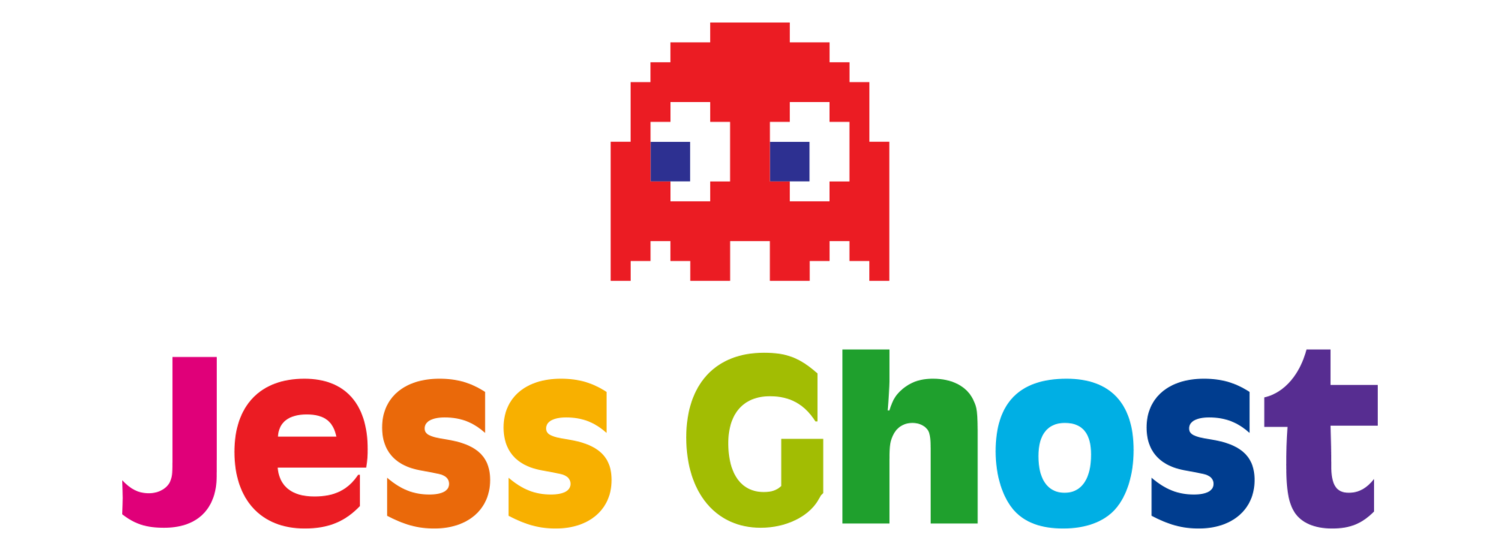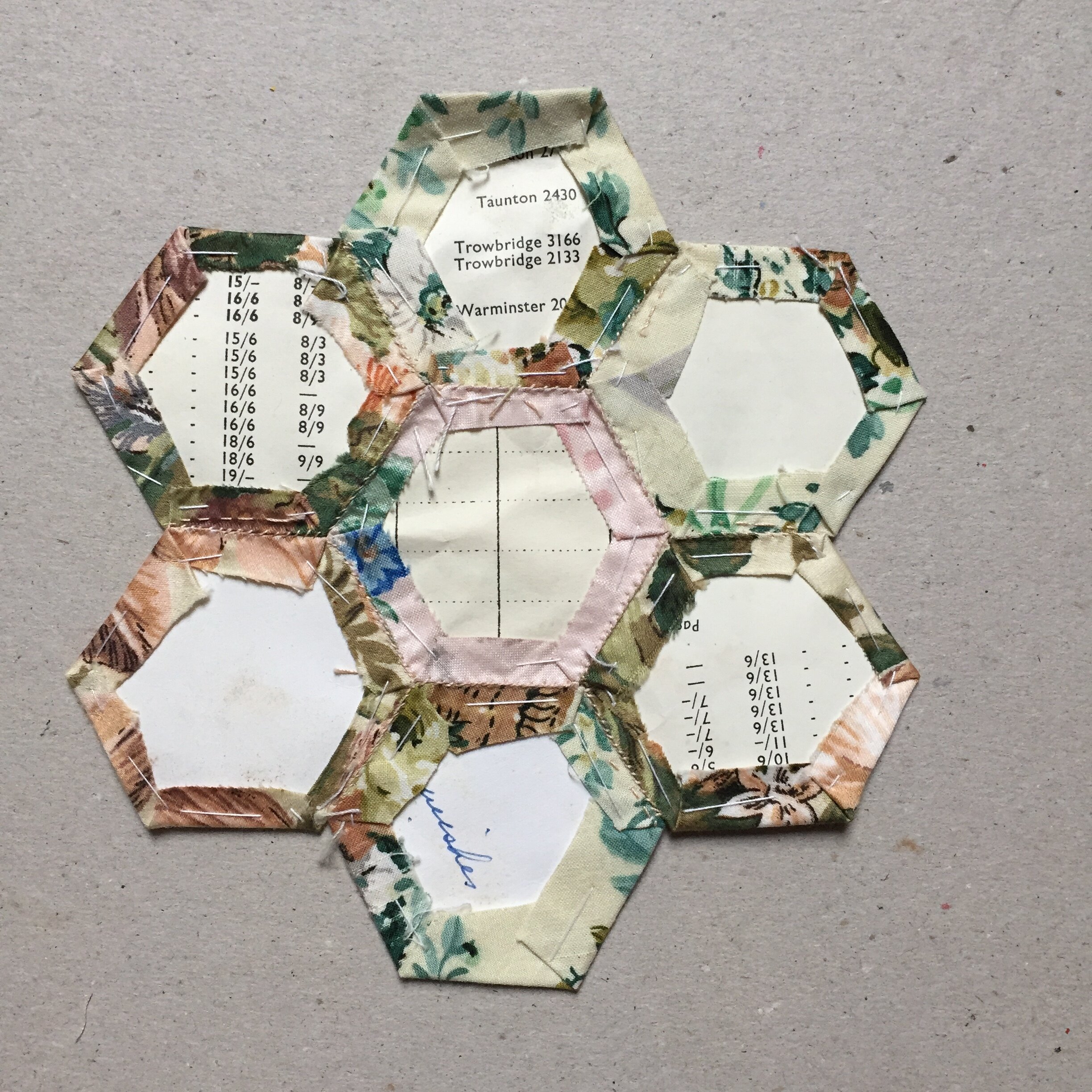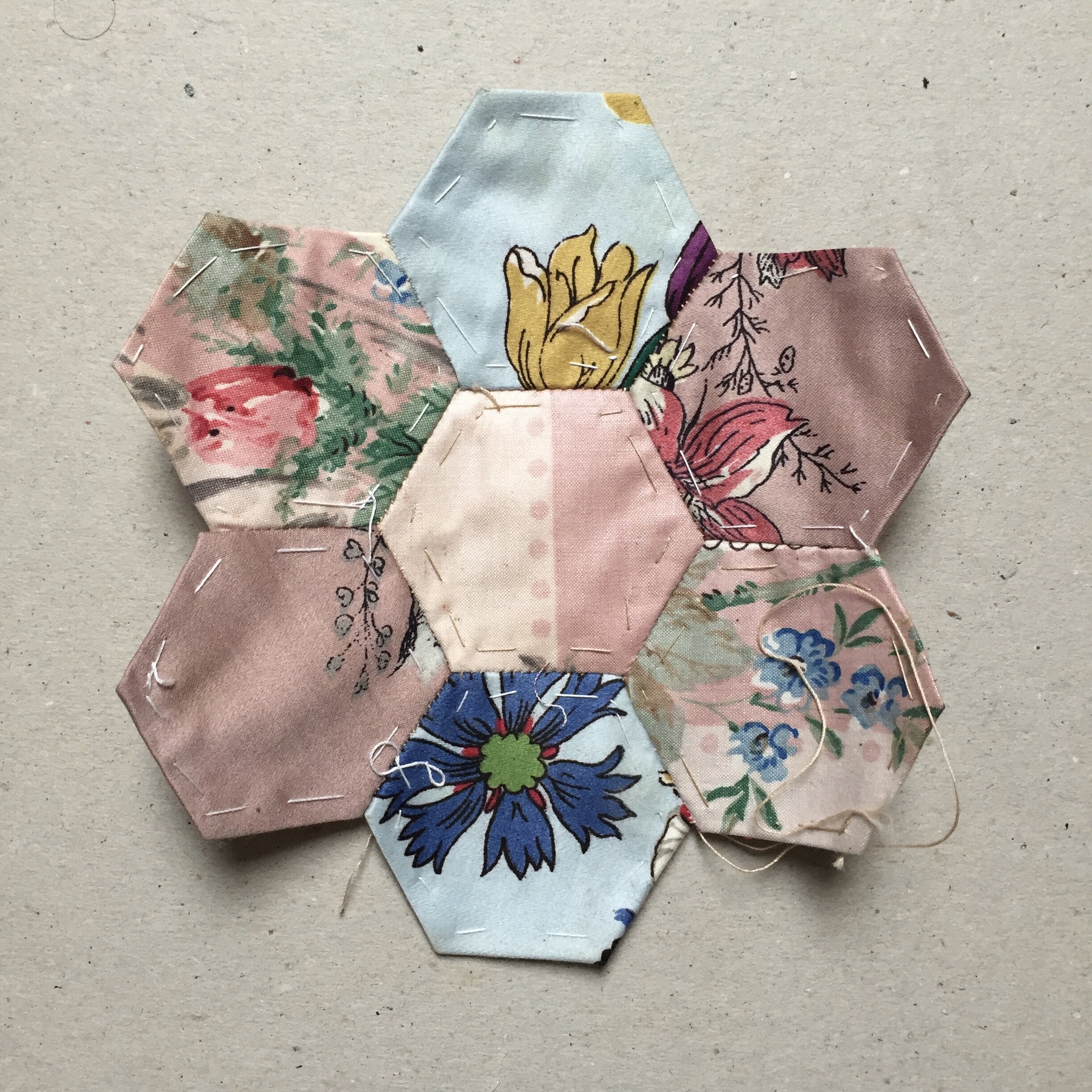An Archive of Mouldy Patches
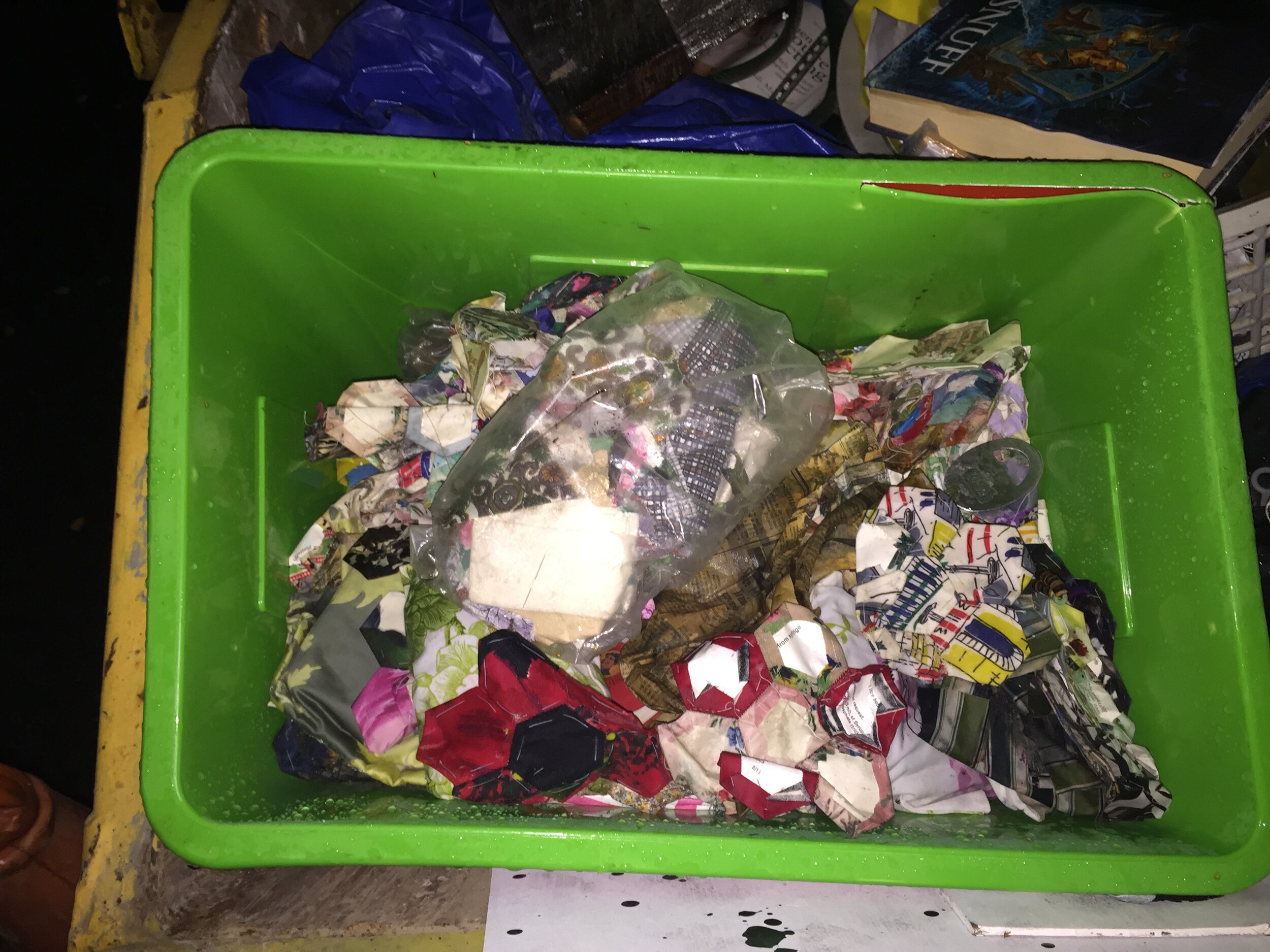
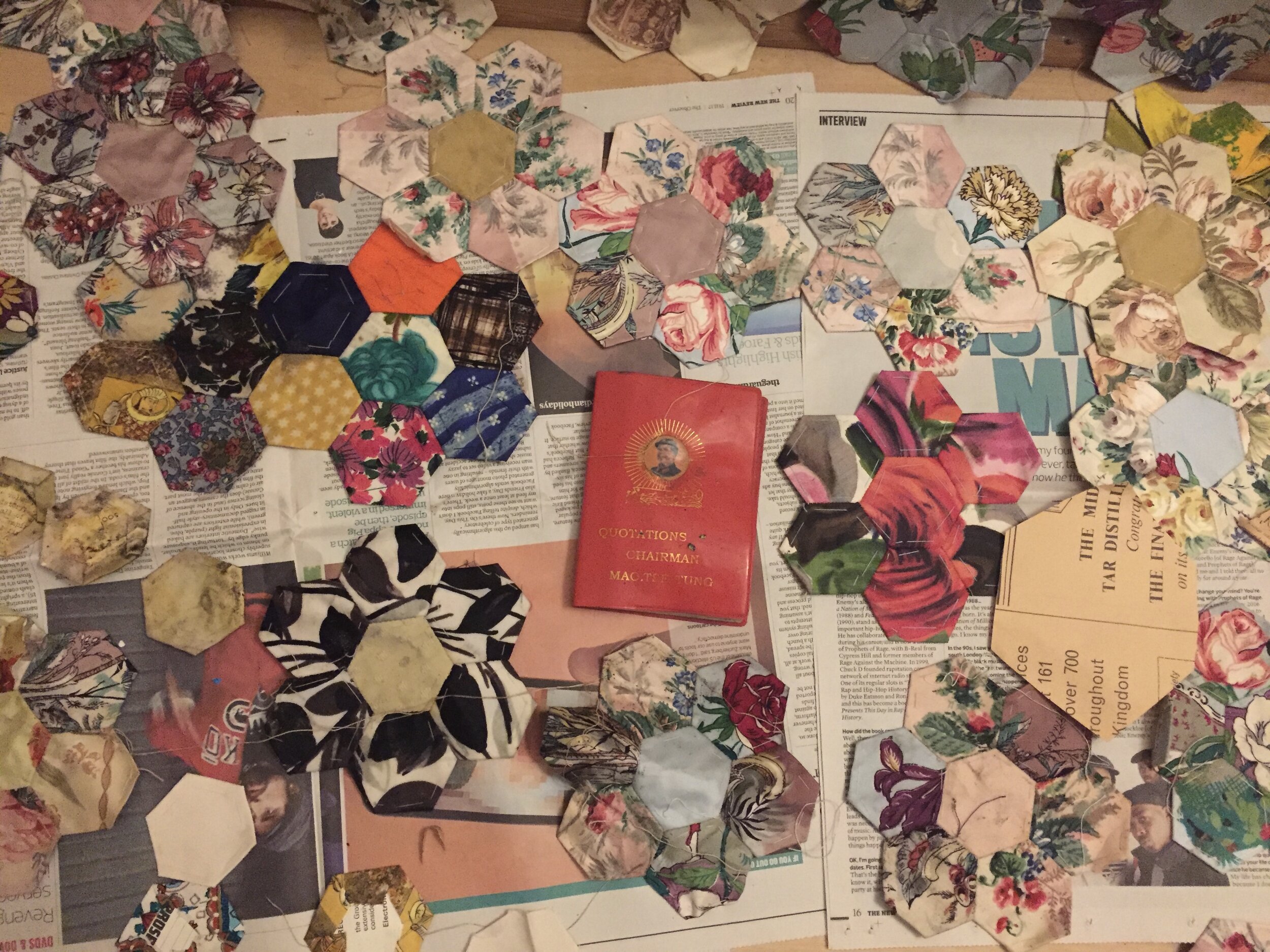

Parts of an English Paper Pieced Patchwork
English paper piecing is a traditional quilting and patchwork technique. It involves hand-sewing shapes together with the help of paper templates. Because hand piecing enables quilt-makers to sew small or fiddly shapes together, paper pieced patterns can be very intricate or complicated, making use of lots of different shapes to create amazing geometric effects over an entire quilt-top.
However, many people prefer to solely use hexagons, and even by just using this one shape, a quilter can make various patterns, or, depending on the purpose of the quilt, no pattern at all.
The work begins with a pile of hexagonal paper templates, all perfectly precise and identical. They can be cut from anything (letters and envelopes, political or philosophical tracts, seed and wine catalogues, company statements), though pre-cut shapes can be bought online. Roughly hexagonal pieces of fabric (at least half an inch to two centimetres bigger than the template) are then folded around the templates and ironed in place. To keep the fabric and template firmly together, a basting stitch (also called tacking, this is sewing long, easily removable stitches) is used to ensure the folds are secure.
Once there are enough basted, fabric hexagons, two are placed right side together and sewn along one edge, right at the top, taking care to avoid sewing through the paper. Whip stitch or feather stitch are most commonly used to avoid the stitch showing on the top side. More and more hexagons are sewn together (to make larger ‘blocks’, if there is a pattern), with every side attached to another. The basting stitch and the paper from a hexagon is only removed when that patch is completely surrounded by other hexagons.
Obviously, this work takes hundreds of hours to complete. Once you have a quilt top, you still need to quilt it to a quilt bottom (with a layer of wadding in between), and then finish the edges. This is why hand-made quilts are so precious or (if made professionally) so expensive. Keep them safe and dry, away from moisture or rodents.
Click on images in galleries to see larger versions and captions.
A Gallery of Patchwork Flowers
Click a flower to enlarge.
A Beautiful Quilt Top of Flowers

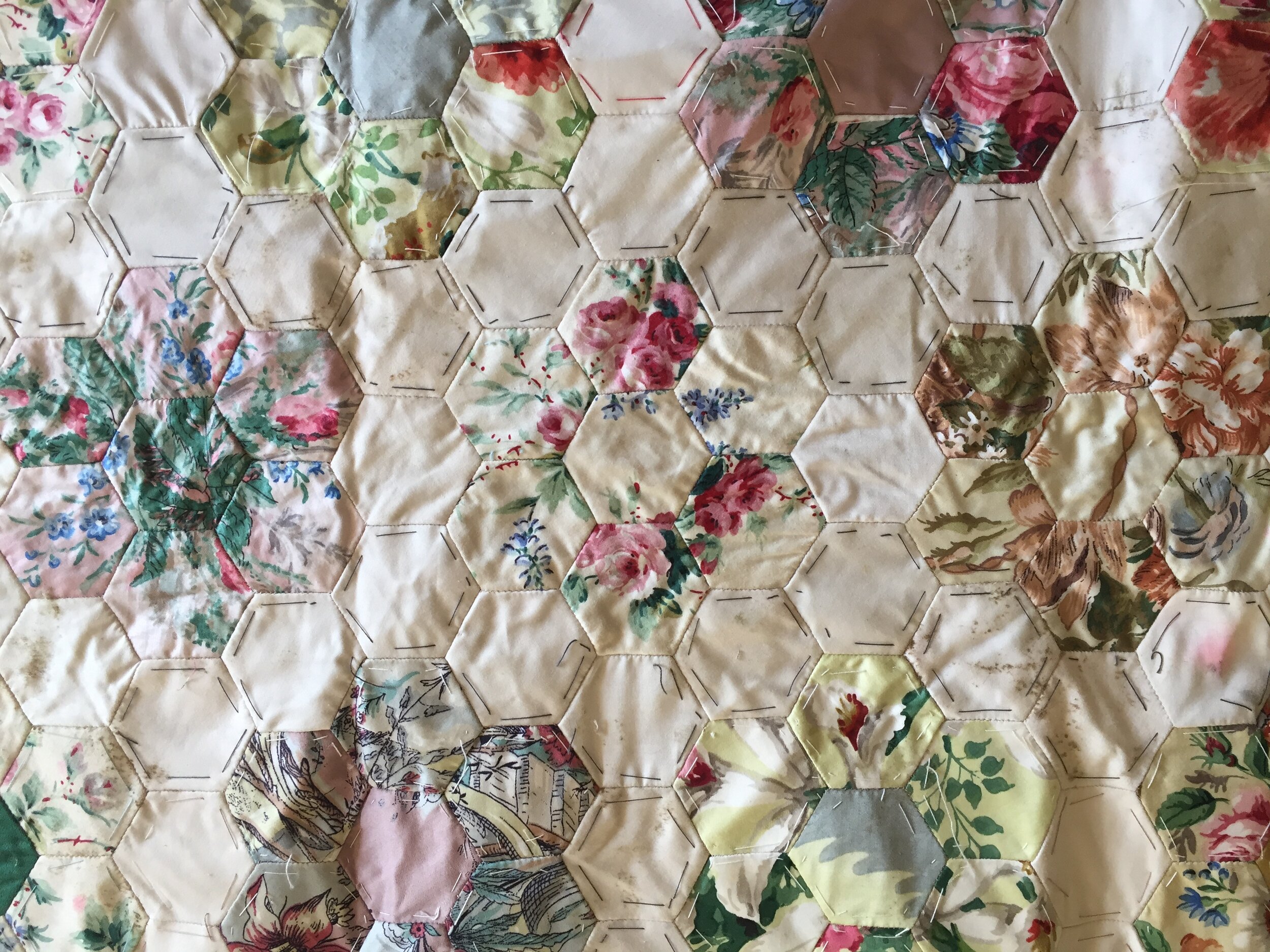
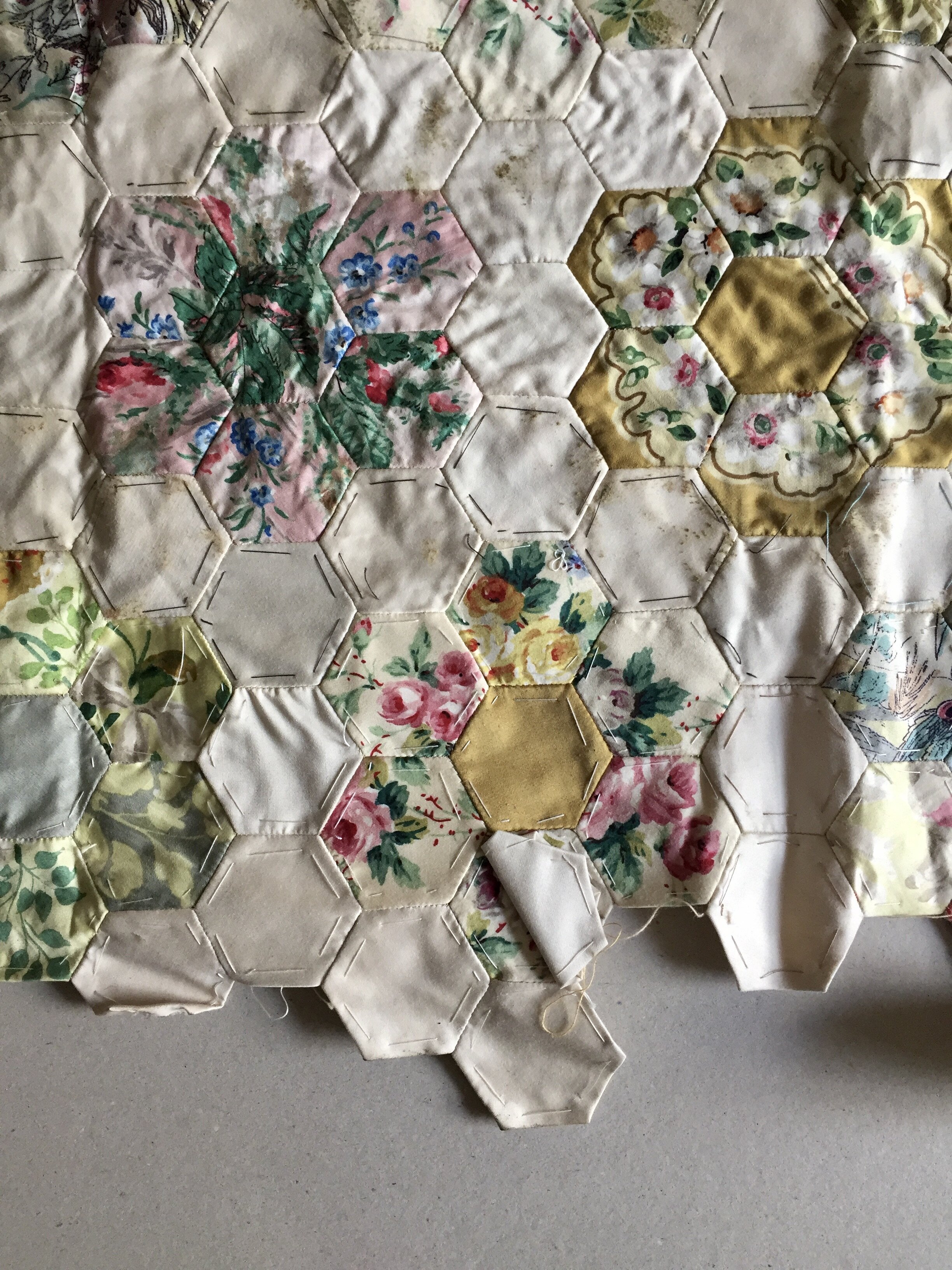


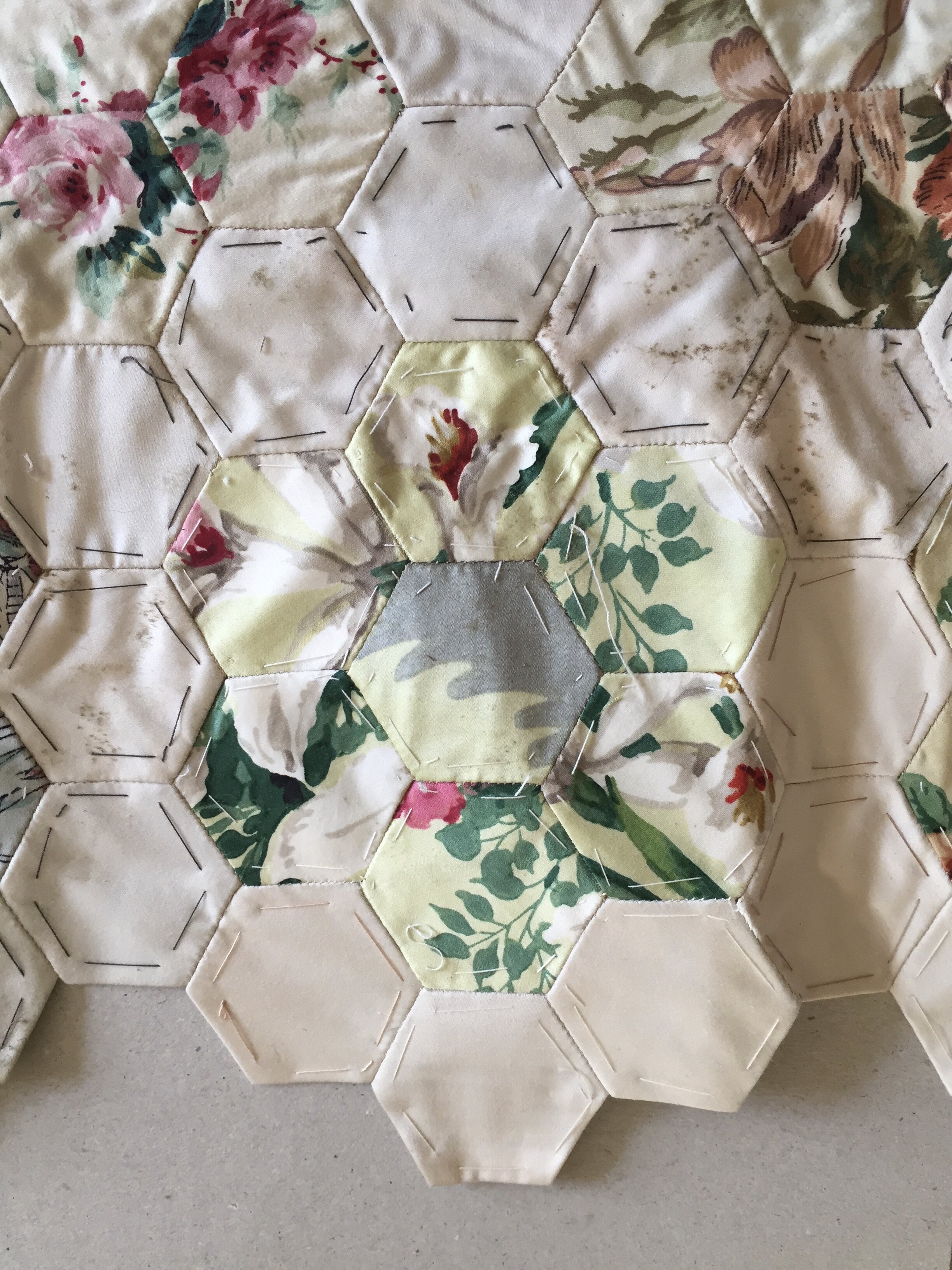
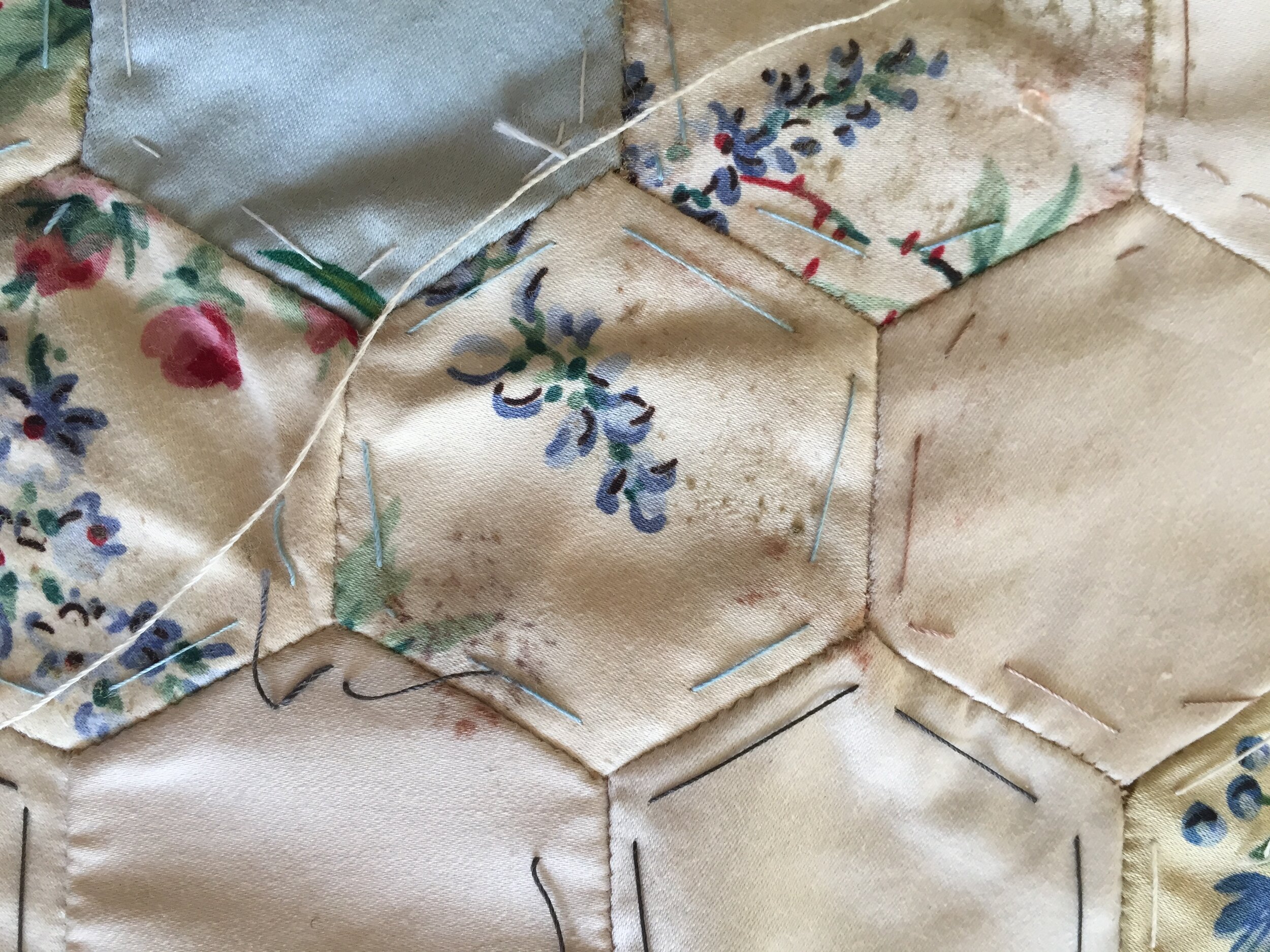
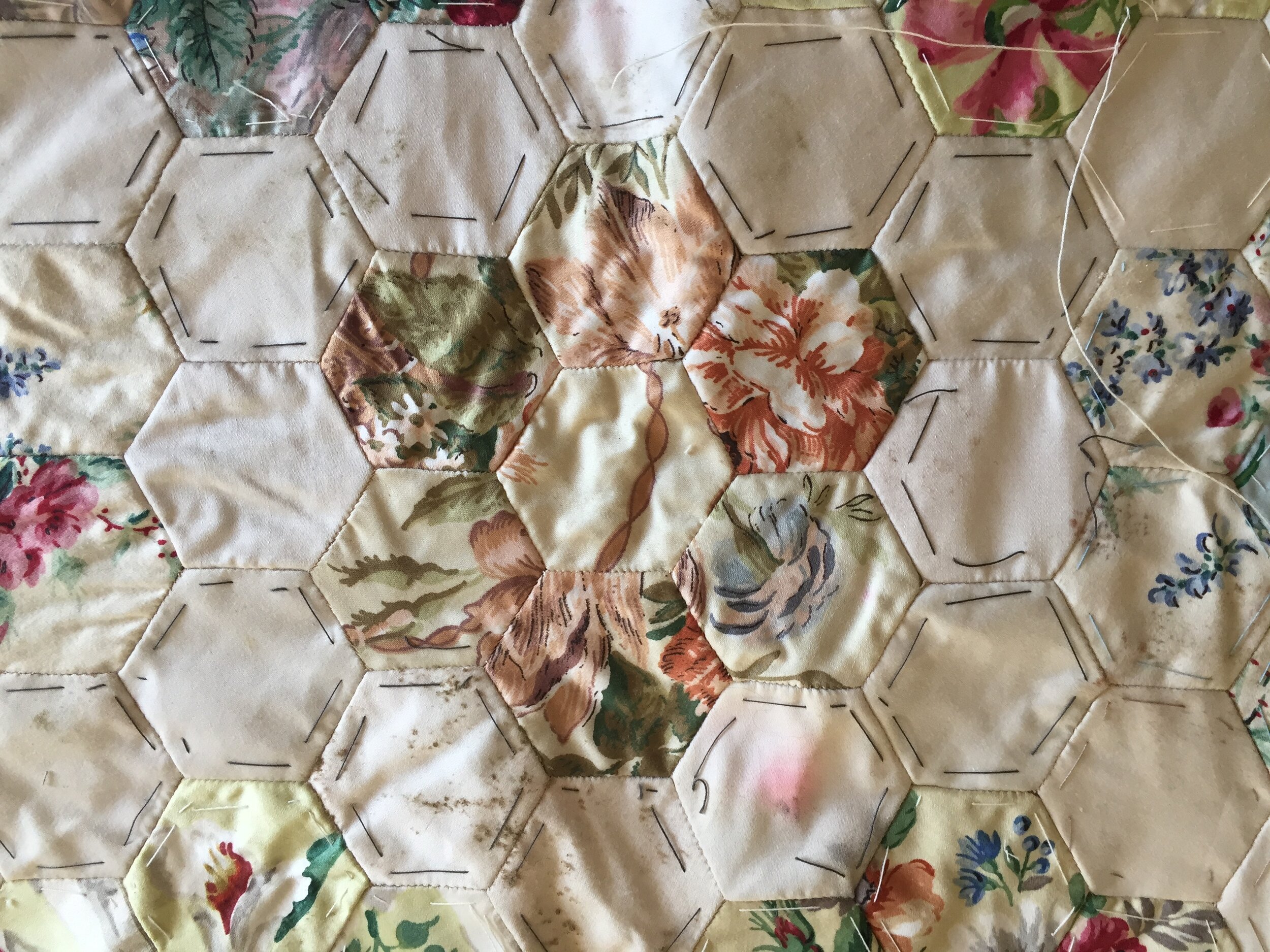


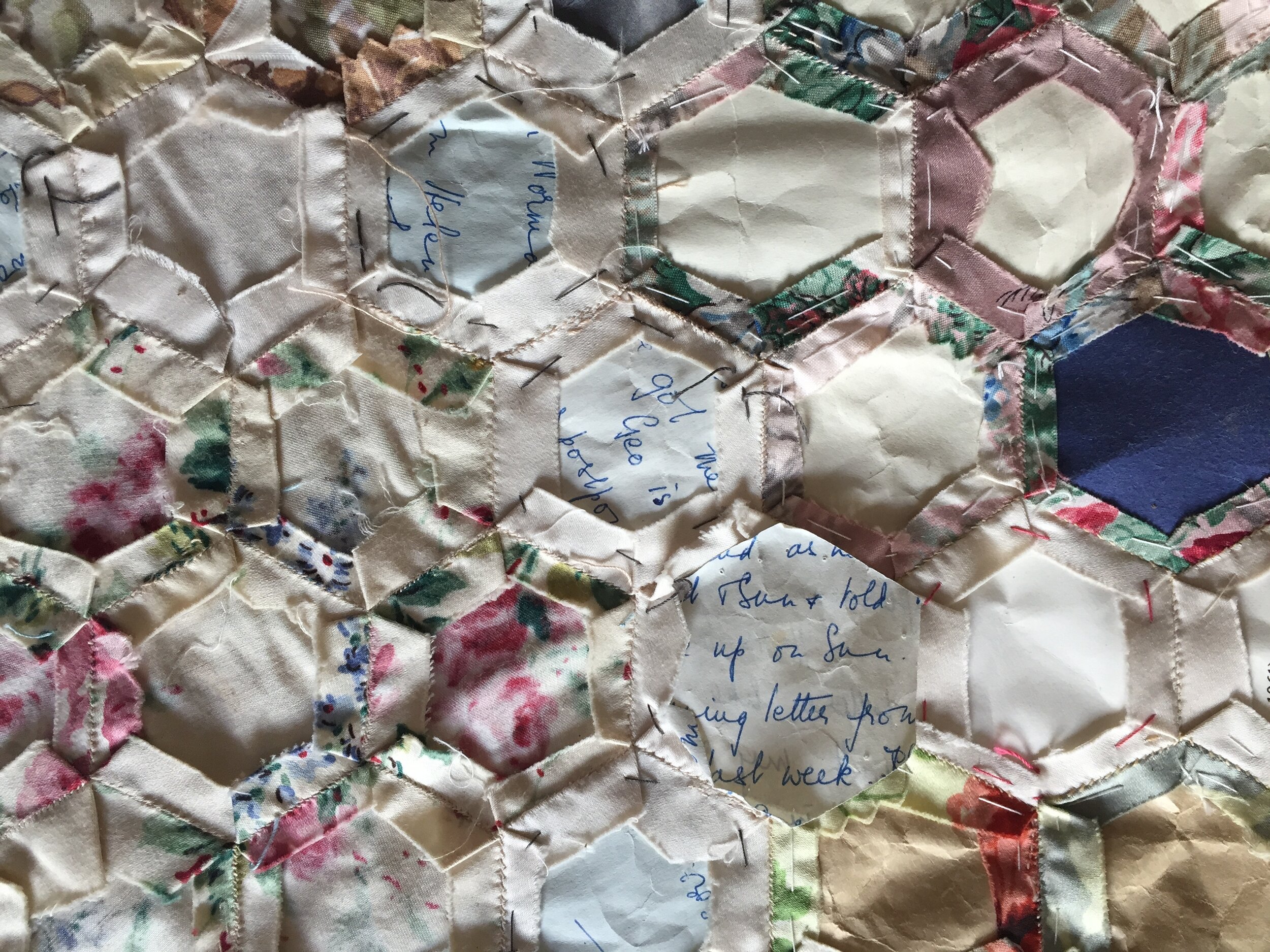
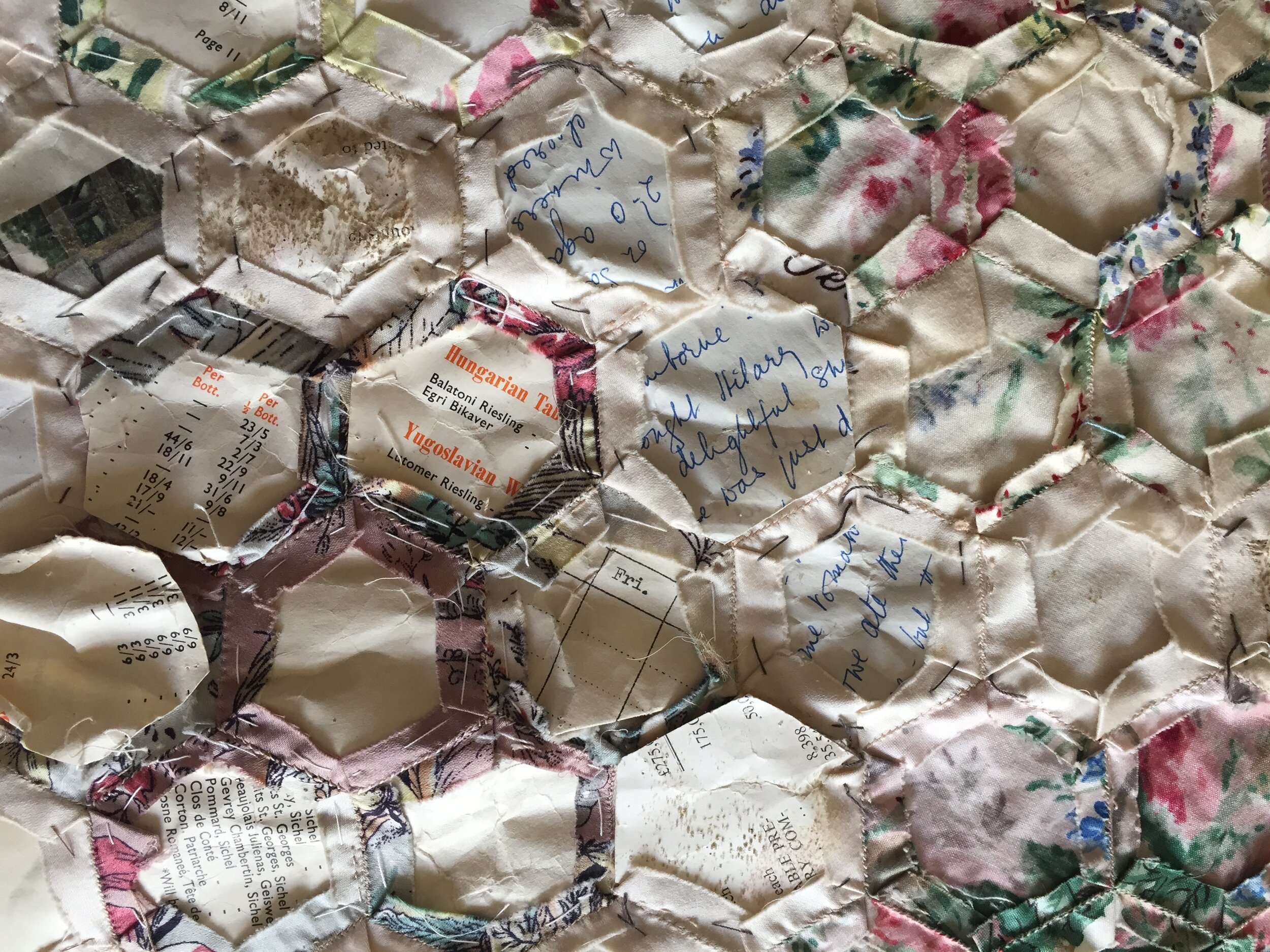
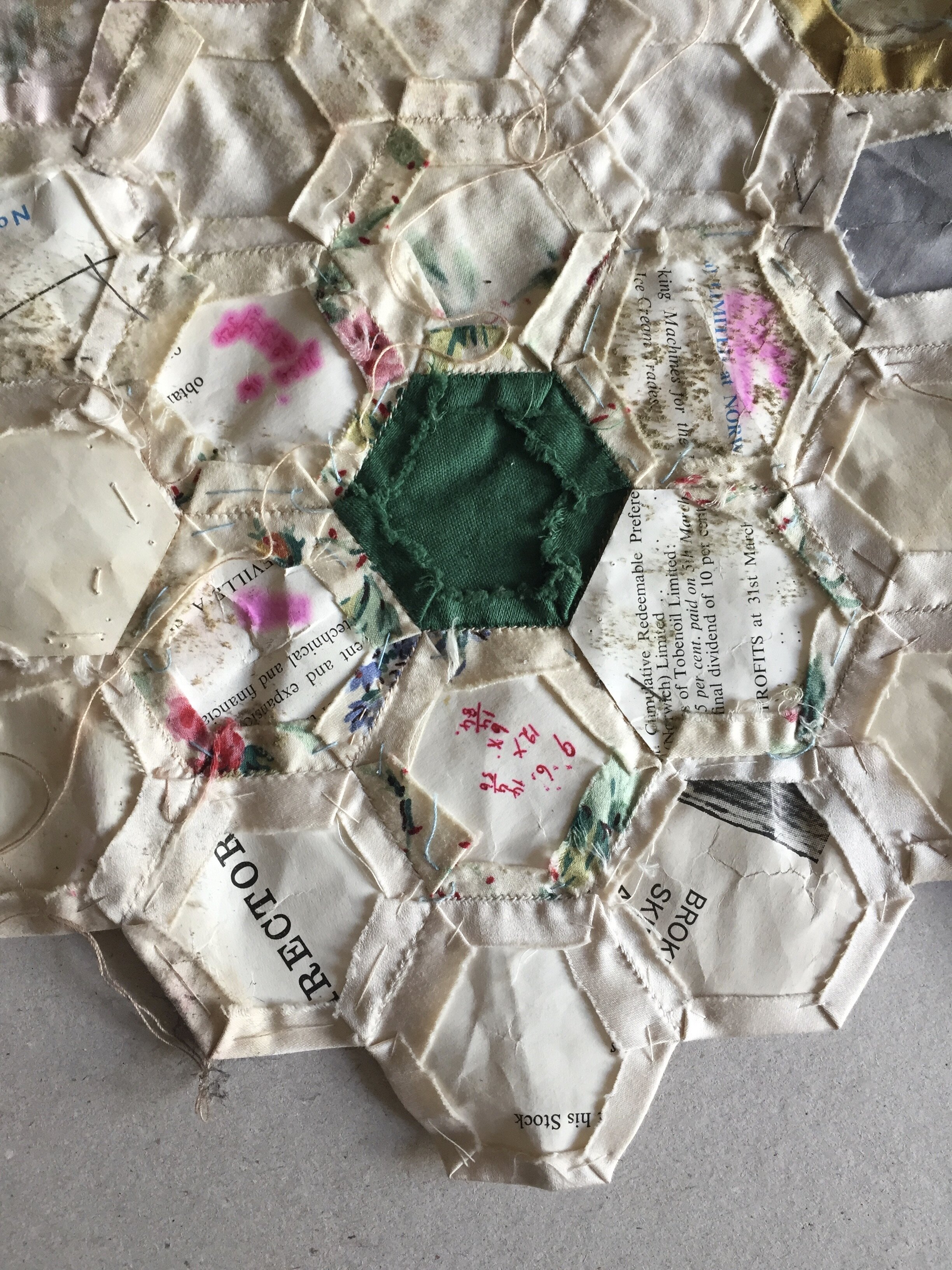
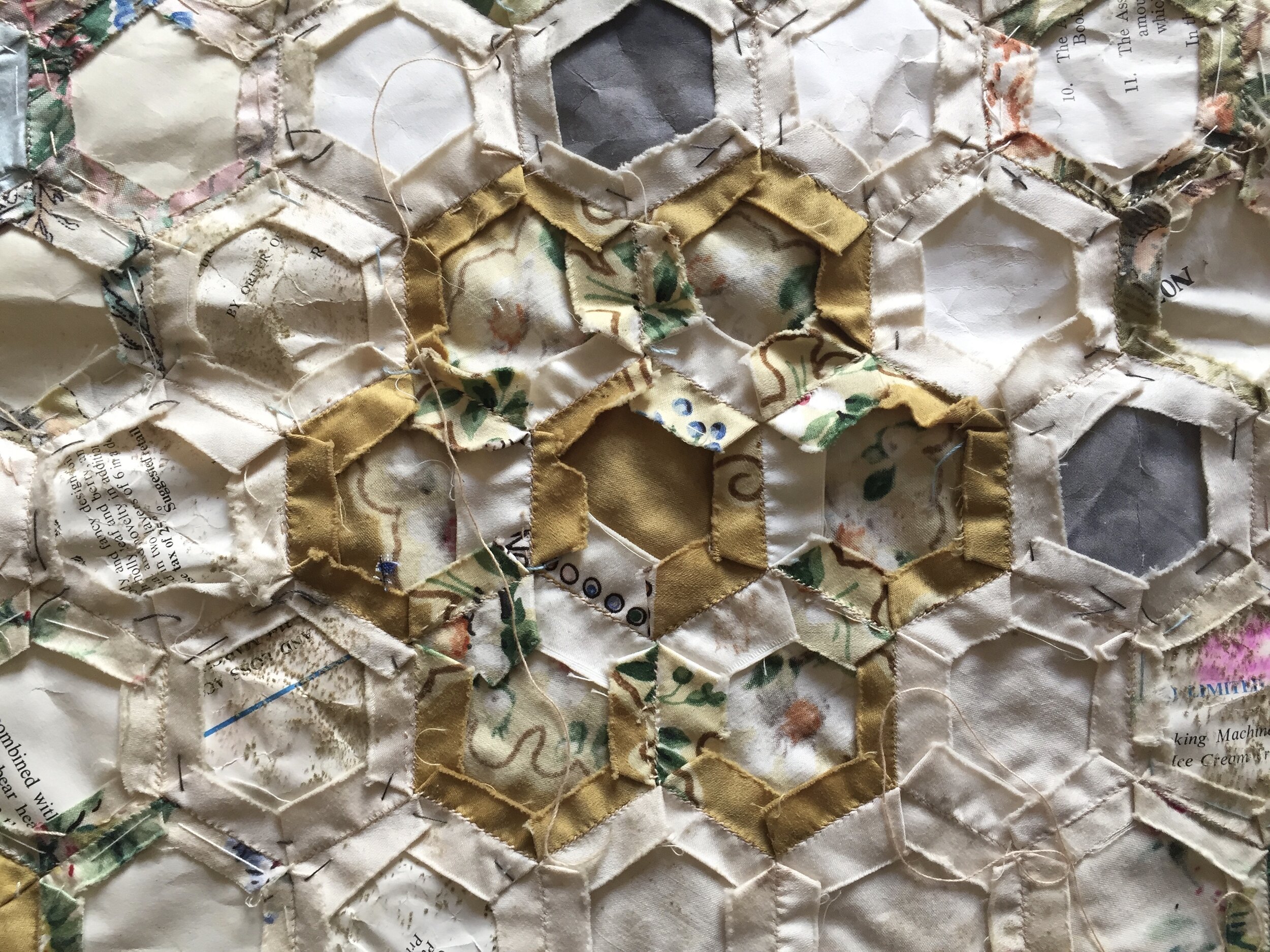
A Blanket of Scraps


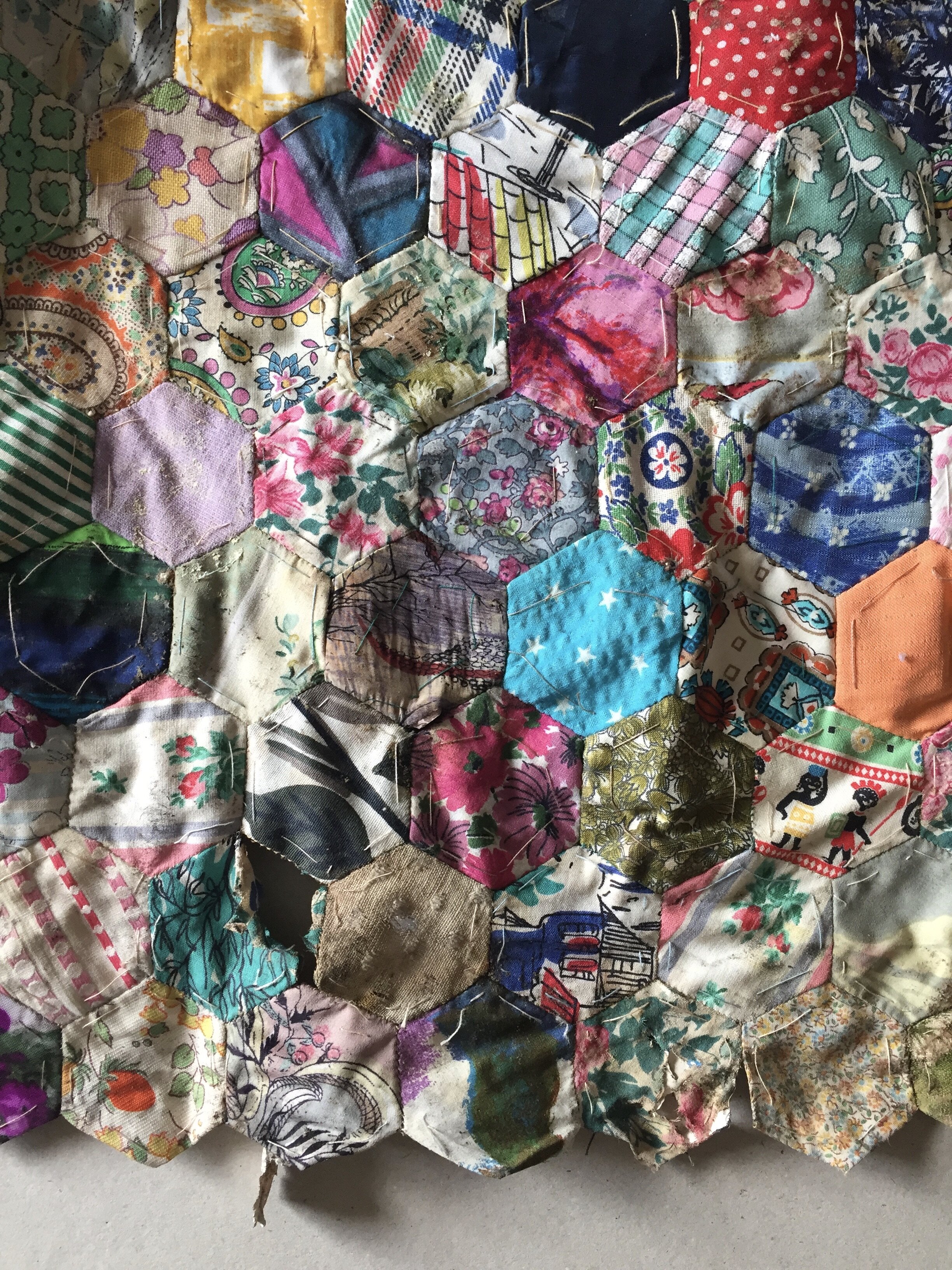
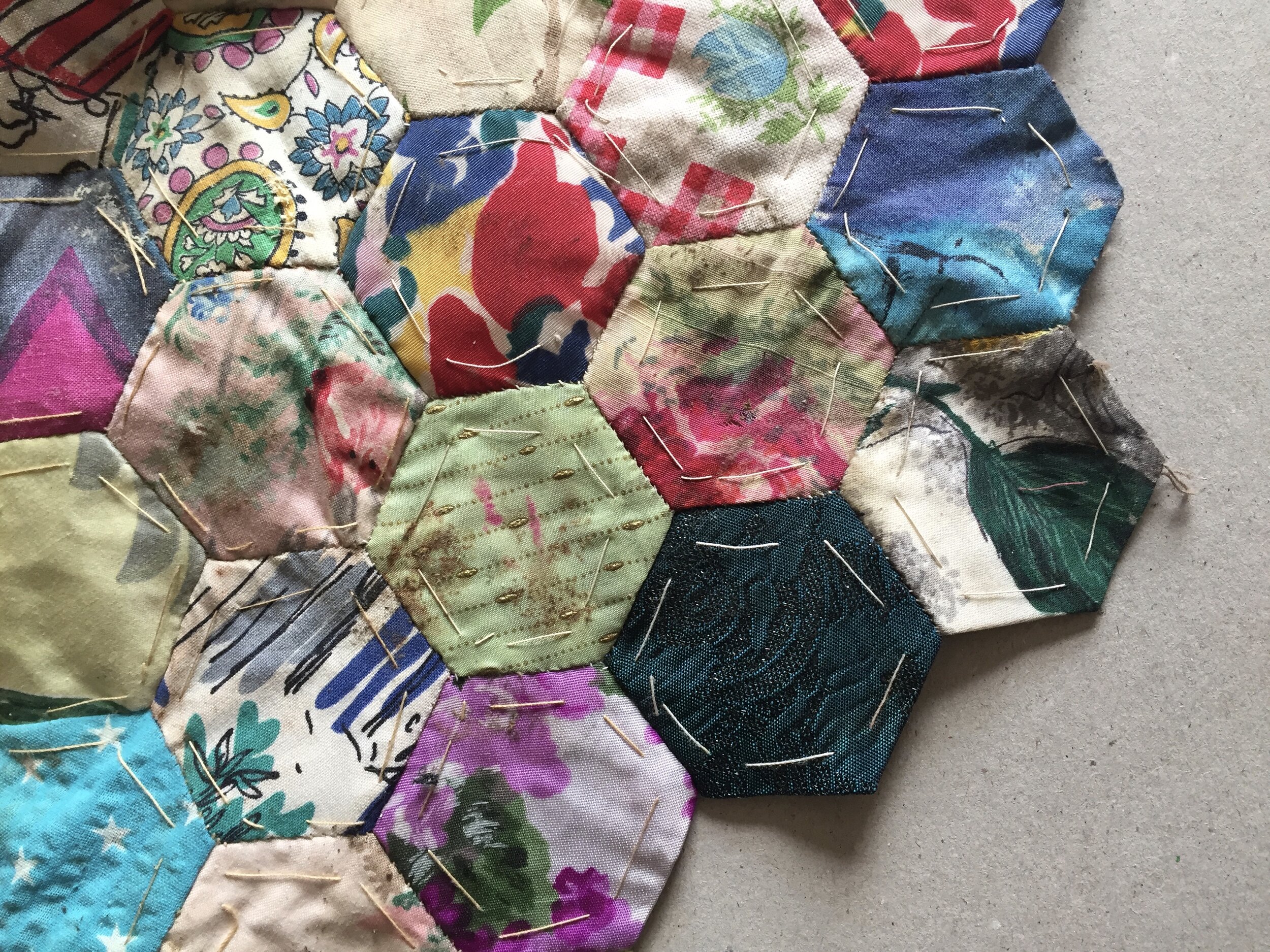
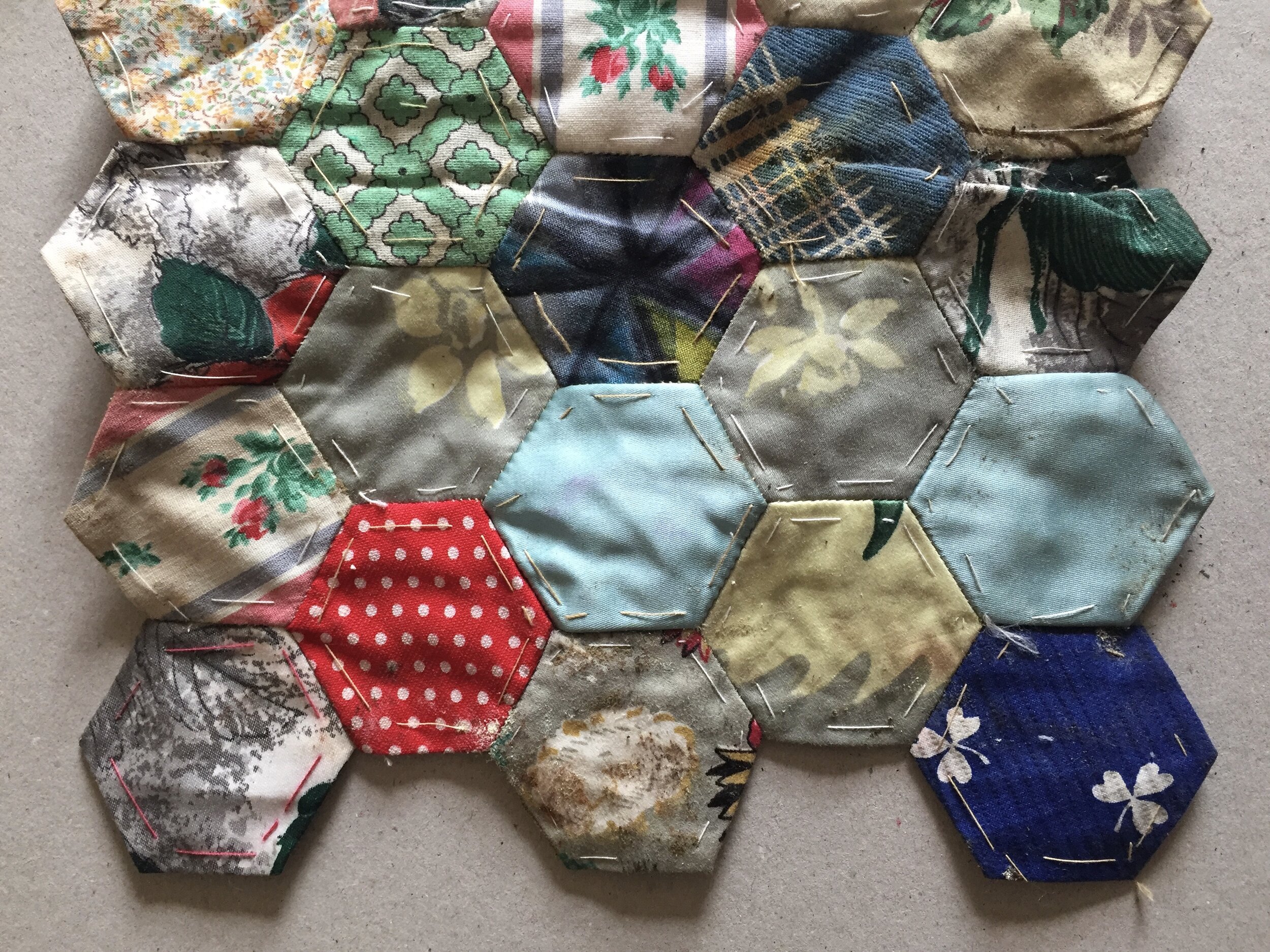
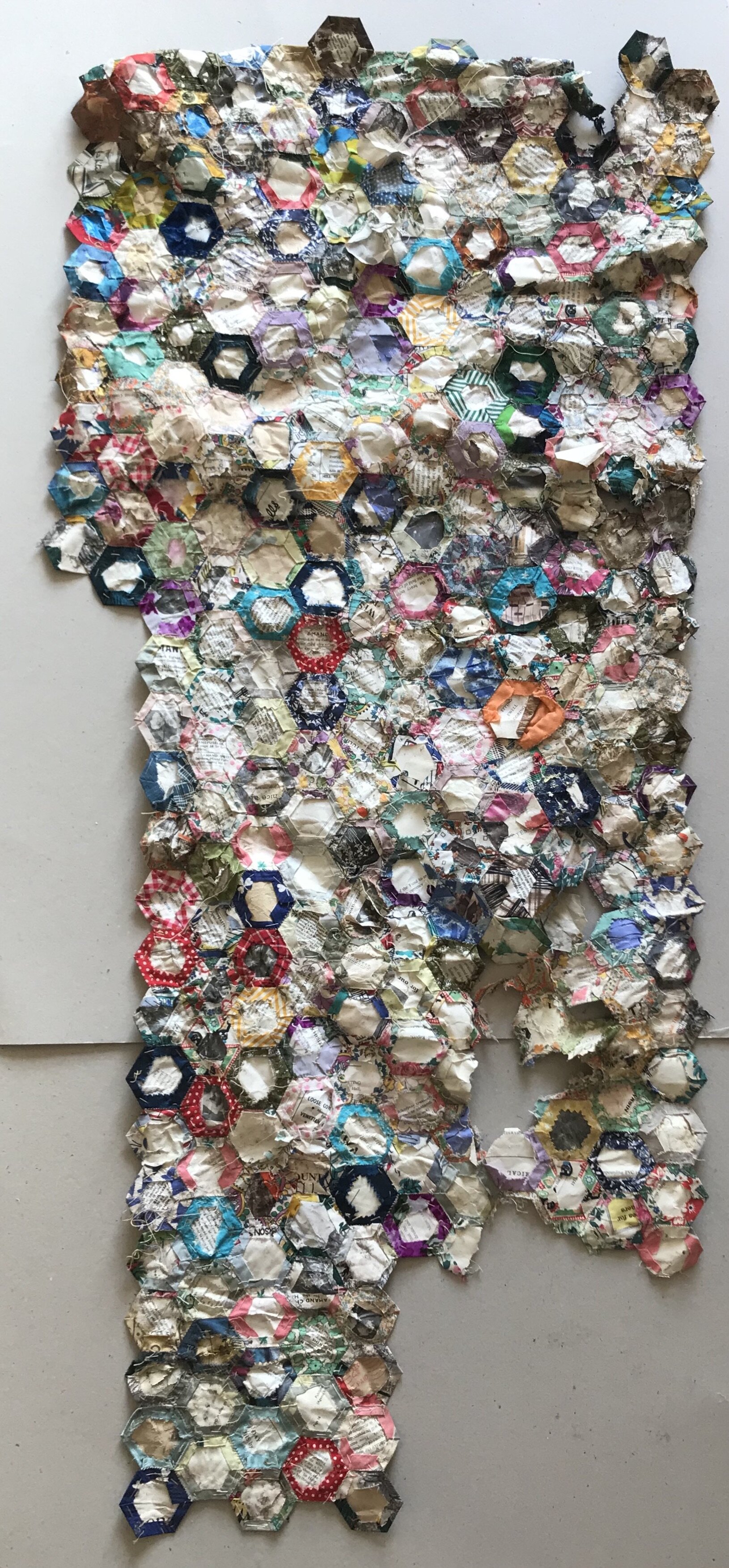
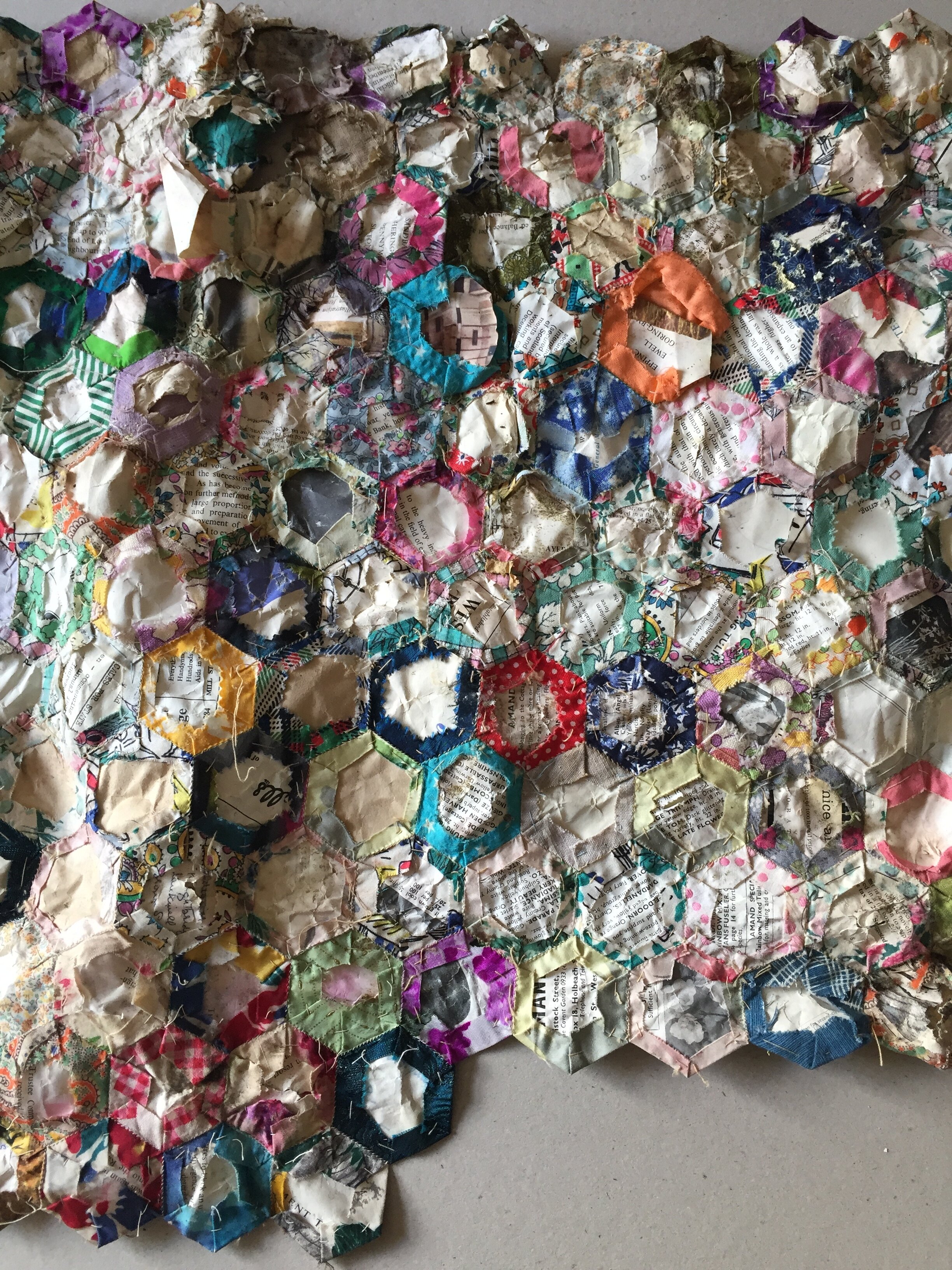
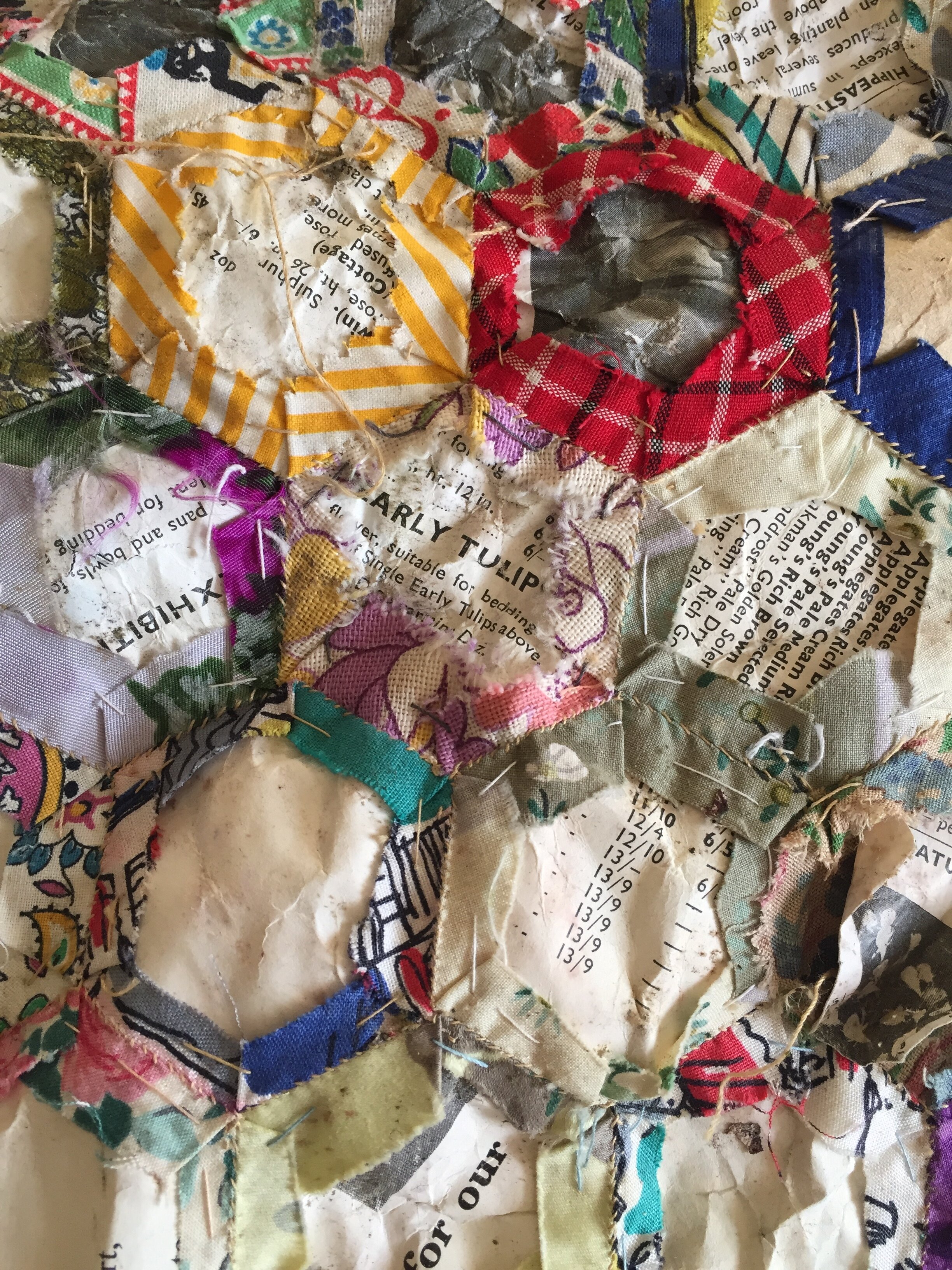
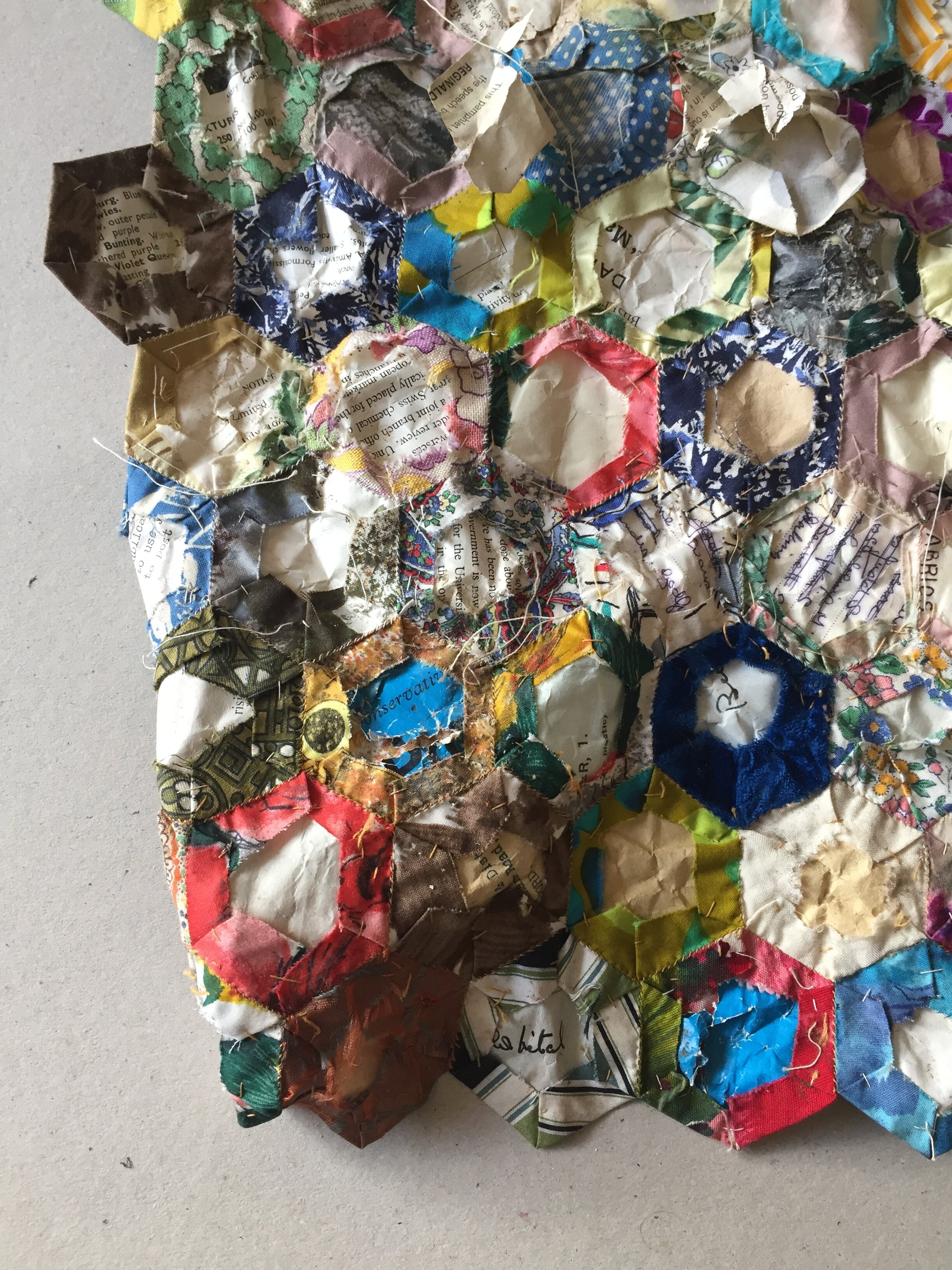

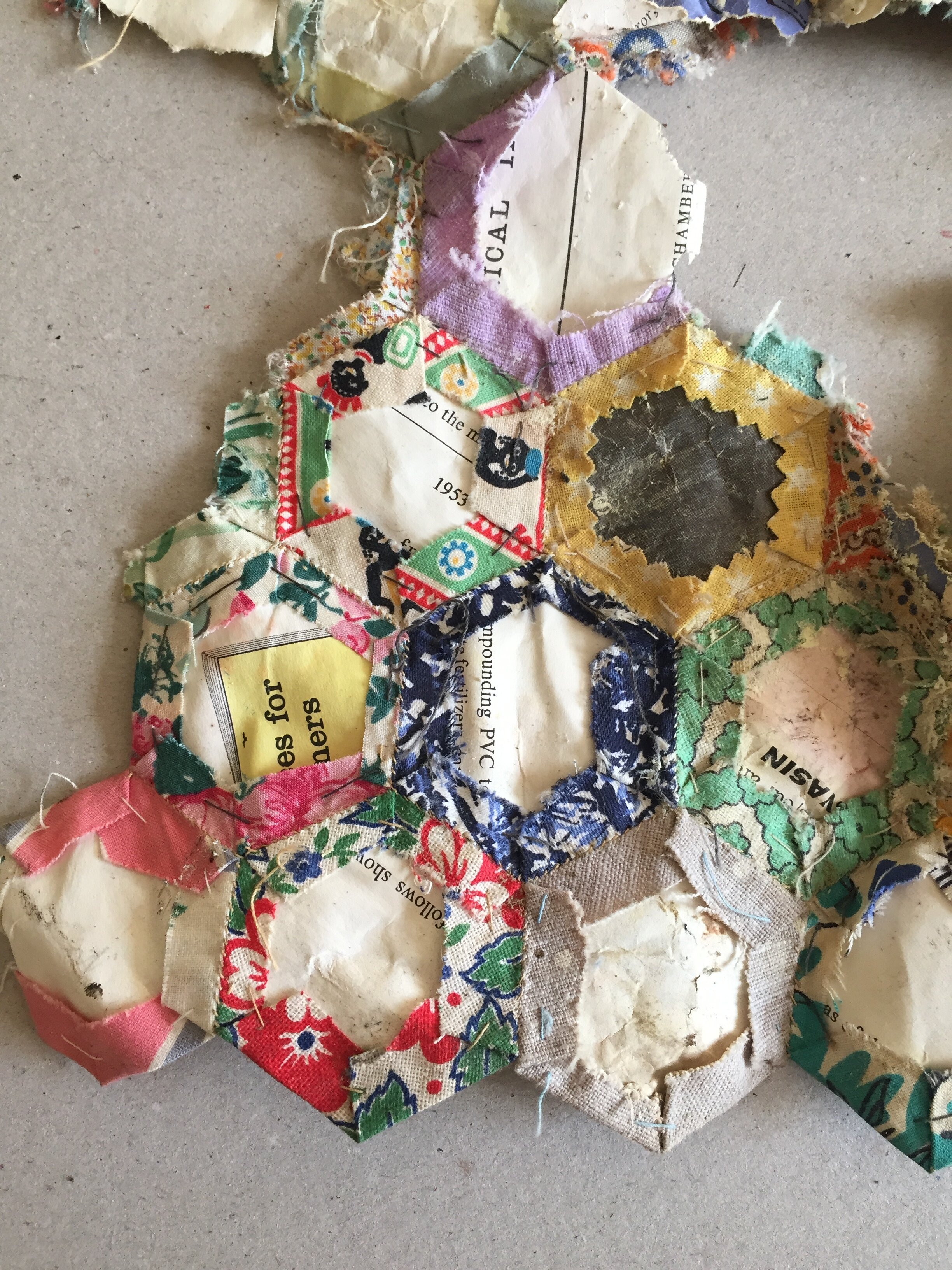
Post Script
I’d already taken the pictures of the quilt tops and had returned them to their lurid green box in the skip where I’d found them (as in that state of decay, I wanted them out of my home as quickly as possible). I had only a few more pictures to take of individual paper pieced flowers when I heard the distant sound of heavy machinery. ‘That'll be the truck removing the skip,’ I thought, and it turned out to be true. The mouldy flowers were binned quickly after the photos were taken, too, but I hope you like this record of them.
Newsletter
At the end of every month, I send out a newsletter. It features a quick blog round-up, behind-the-scenes details, progress updates, pictures and oversharing. You can sign up here.
